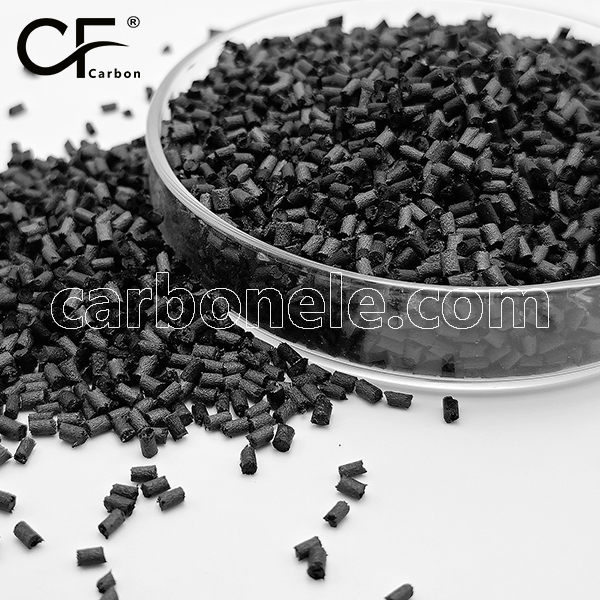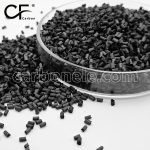
Carbon Fiber ABS Raw Materials ABS CF Filament for 3D Printer
ABS CF has high strength for high-stress parts, good stiffness and impact resistance, is lightweight for aerospace, has dimensional stability and wear resistance, good fluidity and compatibility with 3D printers, is eco-friendly and economical in high-performance scenarios.
- Manufacturer: Carbon New Material
- OEM/ODM: Acceptable
- Color: Black
- Free samples: ≤10kg
- MOQ: 100kg
- Port: Xiamen
- Model : ABS-CF-BCA3
Why to Choose ABS CF as Raw Materials Applied in 3D Printing Filaments?
ABS CF (carbon fiber filled ABS) is chosen as the raw material for 3D printing filaments due to its advantages in mechanical properties like high strength, good stiffness and strong impact resistance; physical properties including light weight, good dimensional stability and wear resistance; processing performance with good fluidity and compatibility; and other aspects such as relatively good environmental protection and economy.
1. Mechanical properties:
– High strength. The addition of carbon fiber significantly enhances the strength of ABS CF. Printed products can withstand greater stress and load, and can be used to manufacture high-strength parts such as tool handles. They are stable and reliable under pressure or tension.
– Good stiffness. It enhances the stiffness of the material, making printed parts less likely to deform. This is beneficial for maintaining precise dimensions and shapes, improving part precision and dimensional stability.
– Strong impact resistance. Carbon fiber further increases the impact resistance of ABS. Printed parts are not easily damaged by external impacts and are suitable for collision-prone occasions such as in automobiles and sports equipment.
2. Physical properties:
– Light weight. Carbon fiber is lightweight and high-strength. ABS CF has a low density and light weight, which is significant in fields with strict weight requirements such as aerospace. It can reduce overall weight and improve equipment performance and efficiency.
– Good dimensional stability. It has a low coefficient of thermal expansion and small dimensional changes when the temperature changes. Printed parts are stable in different environmental temperatures, reducing dimensional deviations and deformations.
– Good wear resistance. It improves the wear resistance of the material. Printed parts are more wear-resistant on the surface and can extend the life of easily worn parts like gears and guide rails.
3. Processing performance:
– Good fluidity. In the molten state, it can smoothly pass through the printer nozzle, ensuring smooth printing and reducing clogging and wire breakage.
– Good compatibility. Compatible with most 3D FDM printers and can be printed with conventional equipment without special modifications, reducing costs and technical thresholds.
4. Other aspects:
– Relatively good environmental protection. ABS is recyclable and carbon fiber can also be recycled to a certain extent. ABS CF has environmental advantages and meets sustainable development requirements.
– Economy. Although carbon fiber is relatively expensive, in scenarios with high performance requirements, ABS CF has a high cost-performance ratio such as ABS CF30 and ABS CF 20.
Application Fields of ABS CF Filament
| Application Field | Specific Application | Advantage |
|---|---|---|
| Automotive field | Manufacturing of automotive parts (dashboard brackets, seat skeletons, door handle structural parts, etc.) | Reduce weight while ensuring strength, improve fuel efficiency and performance. |
| Automotive field | Automotive modification accessories (aerodynamic kits, air intake grilles, decorative strips, etc.) | Meet personalized needs and enhance the performance and appearance of cars. |
| Aerospace field | Aircraft interior parts (luggage racks, seat armrests, ventilation ducts, etc.) | Lightweight and high-strength, meet strict weight and performance requirements, reduce the overall weight of the aircraft and improve fuel efficiency. |
| Aerospace field | Drone components (fuselage frames, wings, propellers, etc.) | Improve structural strength and wind resistance, making drones more stable and reliable. |
| Electronics and electrical field | Electronic product casings (for mobile phones, tablets, laptops, etc.) | Higher strength and rigidity, protect internal electronic components, good heat dissipation performance, and improve service life. |
| Electronics and electrical field | Electronic equipment parts (gears, transmission shafts, brackets, etc.) | Have high wear resistance and precision. |
| Machinery manufacturing field | Mechanical parts (bearings, gears, pulleys, couplings, etc.) | Improve strength, rigidity and wear resistance, extend service life, reduce weight and reduce energy consumption of mechanical equipment. |
| Machinery manufacturing field | Mold manufacturing (injection molds, die-casting molds, etc.) | High strength and good dimensional stability ensure the accuracy and service life of molds, and reduce manufacturing costs and cycles. |
| Construction field | Building models | High precision and strength, accurately reflect the structure and appearance of buildings, and can be processed in various colors and surfaces to make the model more realistic. |
| Construction field | Building decorative parts (decorative lines, carved panels, screens, etc.) | Can be customized, with unique appearance and style, adding an artistic atmosphere. |
| Sports equipment field | Sports equipment (parts of bicycles, skateboards, snowboards, golf clubs, etc.) | Improve strength and lightweight degree, enhance performance and durability. |
| Sports equipment field | Sports training equipment (strength training equipment, fitness equipment, etc.) | Have high strength and stability to ensure the safety and training effect of athletes. |
| Medical device field | Medical device casings (for medical instruments, diagnostic equipment, surgical instruments, etc.) | Good chemical stability and biocompatibility, and can be disinfected and cleaned. |
| Medical device field | Prosthetics and orthotics (joints, connectors, brackets, etc.) | Have high strength and precision to ensure performance and comfort. |
For more accurate and detailed information, it is recommended to refer to the product manuals and technical data sheets of the manufacturer Carbon Xiamen New Material Company.
Contact Us
If you are interested then feel free to reach out for additional information or any other material information with any questions.

Frequently Asked Questions
Carbon (Xiamen) New Material Co., Ltd. aims to provide buyers with "one-stop" worry-free high-quality services. Here you can find all information about carbon fiber engineering plastics. If you still have questions, please send us an email for consultation!
-
How can I contact the manufacturer of a product that interests me?
When you find a product you are interested in, you can contact the manufacturer directly by sending an email and we will get back to you as soon as possible.
-
How do I find the products that interest me?
All you need to do is enter the keyword, product name in the search window and press the Enter key on your keyboard. Your search results page will then be displayed. You can also search within the product category pages on the home page. Each category is divided into subcategories, allowing you to refine your search and find products that interest you.
-
Where will I find a buying guide?
Please contact our after-sales service directly and we will provide you with a comprehensive operating guide.
-
What are CF Reinforced Thermoplastic Composites?
CF Reinforced Thermoplastic Composites are materials where carbon fibers are incorporated into a thermoplastic matrix. They combine the strength and stiffness of carbon fibers with the processability and recyclability of thermoplastics. For instance, they are used in automotive parts like bumper beams.
-
What are the benefits of CF Reinforced Thermoplastic Composites over traditional composites?
The key benefits include faster production cycles, easier recyclability, and better impact resistance. They also offer design flexibility. An example is in the manufacturing of consumer electronics casings where complex shapes can be achieved more easily.
-
How are CF Reinforced Thermoplastic Composites processed?
Common processing methods include injection molding, extrusion, and compression molding. Injection molding is widely used for mass production. For example, in the production of small components for the medical industry.
-
What industries use CF Reinforced Thermoplastic Composites?
They are utilized in aerospace, automotive, medical, and sports equipment industries. In aerospace, they can be found in interior components. In the medical field, they might be used in prosthetics.
-
How does the carbon fiber content affect the properties of the composites?
Higher carbon fiber content generally leads to increased strength and stiffness but may reduce ductility. A moderate content is often balanced for specific applications. For example, a higher content might be preferred in structural parts of a race car.
-
What are the challenges in using CF Reinforced Thermoplastic Composites?
Challenges include higher material costs, complex processing equipment requirements, and ensuring uniform fiber dispersion. Issues with adhesion between the fibers and the matrix can also arise. An example is in achieving consistent quality in large-scale production.

























